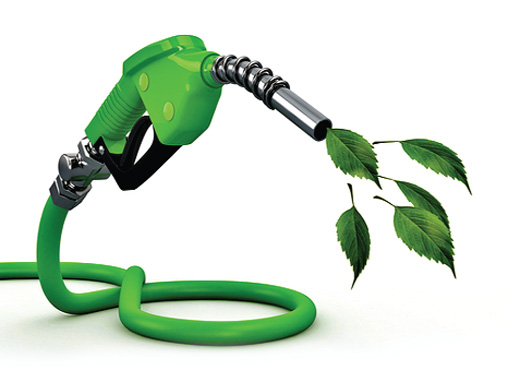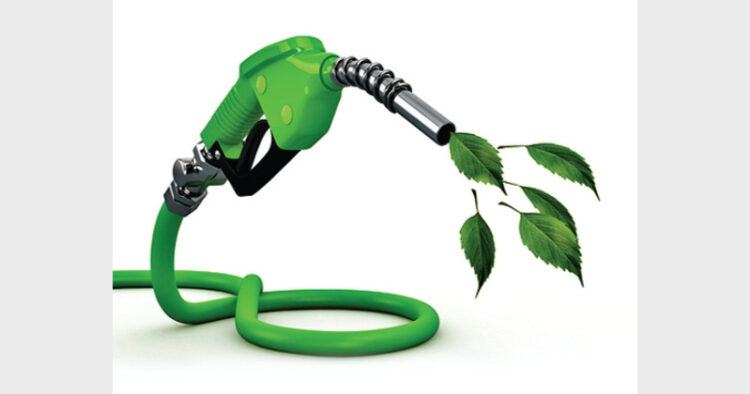 As the world plunges into severe energy crisis, renewable sources of energy such as bio-fuels emerge as a ray of hope. India has a long way to go in building a successful domestic market for renewable energy
As the world plunges into severe energy crisis, renewable sources of energy such as bio-fuels emerge as a ray of hope. India has a long way to go in building a successful domestic market for renewable energy
Dr BK Behra
Globally, biofuels are considered as an effective alternative to fossil fuels. All the developed economies are gearing up for the development of commercially viable biofuels like algae fuel which not only contribute to the sustainable development but strengthen the primary sector of our economy i.e. agriculture. While the research in the area of alternative means of sustainable energy or renewable energy touches new heights in the rest of the world, our research institutions often fail to come up with an emulative plan or endeavour towards achieving this goal. In contrast with the present scenario of India, a comprehensive analysis of the global experience becomes an imperative to craft a pro-active policy and research oriented approach.
Besides various types of nonconventional energy, we have a lot of opportunities to use sustainable microbial resources for generating different energy carriers like hydrogen, ethanol, diesel directly from microalgae, macroalgae, Cyanobacteria, and fermentative bacteria. The most significant fact about microbial energy carriers is their less carbon dioxide emission property compared to conventional liquid fuels like petrol and diesel. In addition, abundant aquatic resources (both marine and freshwater) are sustainable storehouse of a variety of micro- and macroalgae which can be ultimate sources for generating green energy. Biodiesel is simple to use, biodegradable, nontoxic, and essentially free of sulphur and aromatics. It can be used in most diesel engines, especially newer ones, and emits fewer air pollutants and greenhouse gases other than nitrogen oxides. It’s safer to handle and has virtually the same energy efficiency as petroleum diesel.
The in this area research has also revealed the possibility of obtaining hydrogen and electricity directly from microalgae and formative bacteria. When hydrogen is burned, the only emission it makes is water vapour, so a key advantage of hydrogen is that when burned, carbon dioxide (CO2) is not produced. The concept of Microbial Fuel Cells (MFCs) has brought hope for using various types of microbes to generate electricity, directly.
The United States of America
In the USA, homegrown biofuels have been promoted by successive administrations as an alternative to Middle Eastern oil imports, despite being more expensive. Exploding global demand for transportation fuels, concerns about “peak oil,” increasing impacts of atmospheric CO2, the USA’s increasing importation of fuel, and the energy security risks that come with that have fueled a rebirth in the interest of biofuels in general and algae-based biofuels in particular. Advances in biotechnology, such as the ability to genetically engineer algae to produce more oils and convert solar energy more efficiently, have unleashed new possibilities not feasible during the ASP years.
Most of the activity in algae research and commercial production has been in the USA. With more than 100 start-ups and large corporations, along with the US government, investing billions in this new industry, the USA is the leader in advancing algae-based fuels. The US-based Algal Biomass Organisation is a leading voice for the industry and a source for information on the companies involved in advancing the technology.
In the USA, about 80 per cent projects are currently involved in electricity production from biogas plants linked to dairy farms. A large number of biogas energy projects are noticed in New York, Pennsylvania, Vermont, and Wisconsin, out of about 8000 biogas energy project being under operation condition. At present, the USA has over 2000 sites producing biogas: Since 2011, the University of Wisconsin at Oshkosh has been operating a $3.5 million digester that uses a combination of agricultural waste, yard waste, and supermarket waste. When the biodigester goes into full production in April, it should process some 8000 tonnes of organic which annually provide as much as 10 per cent of the University’s electric need.
Germany and Scandinavia
At present, compressed biogas is widely being used in Sweden, Switzerland, and Germany. Interestingly, biogas-empowered train “Biogasta get Amanda” has been in service in Sweden since 2005. Even in Sweden, pig manure is being used to run a customer-adapted combustion engine. In 2007, an estimated 12,000 vehicles were being fueled with upgraded biogas worldwide, mostly in Europe. The number of farm-scale digesters in Europe has increased drastically. At the end of 2011, the number of these digesters was more than 4000 in Germany, 350 in Austria, 72 in Switzerland, and 65 in the UK followed by Denmark with 20 community-type and 35 farm-scale plants, and Sweden had 12 plants.
In Germany, cow manure and energy crops are the main forms of feedstock. About two livestock units (corresponding to about 2 cows or 12 rearing pigs) plus 1 ha of maize and grass are expected to yield a constant output of about 2 kWhel (48 kWhel per day). The world’s first and largest tubular production facility for microalgae in Klotze (Saxony-Anhalt, Germany) with 20 photobioreactors and around 700,000 litre volume on a 1.2 ha (2.9 acre) site was developed by GICON with the technical collaboration of Anhalt University of Applied Sciences. In 2013, the Central Germany Biosolar Center was awarded the Hugo Junkers prize, an award from the State of Saxony-Anhalt for the “Most Innovative Alliance” between academia and industry. Compared to conventional photobioreactor systems, the GICON system operates with a high level of reliability and low maintenance requirements. Biofouling is minimised by utilising a new tube material which was specifically developed for algae cultivation applications.
Japan
Japan started the first large-scale cultivation of Chlorella vulgaris (Chlorella). Then extensive production of Arthrospira platensis (Spirulina) was first set in Mexico, and today, the major share of industrial microalgae production is located in 136 3 From Algae to Liquid Fuels the Asia Pacific Rim, including China and India. The industrial scale world production of the three major strains, including Spirulina spp., Chlorella spp., and Dunaliella spp., accounted for 8000 t of dry weight/year, and among them Spirulina was estimated to be over 3000 t of dry weight/year. These biomasses are marketed as health food, nutraceutical products, and for cosmetics without paying much attention on algal biodiesel.
Seaweed Bioethanol Production in Japan, titled the “Ocean Sunrise Project,” aims to produce seaweed bioethanol by farming and harvesting Sargassum horneri, utilising 4.47 million km2 (sixth largest in the world) of unused areas of the exclusive economic zone (EEZ) and maritime belts of Japan. This is considered to be vital for Japan to produce biofuels from these oceanic resources. Through seaweed bioethanol production, the project aims to combat global warming by contributing an alternative energy to fossil fuel.
United Kingdom
The main area for hydrogen fuel use is for road transportation, which makes up a huge percentage of transportation emissions worldwide. The UK has a target to reduce carbon in transportation by 90 per cent, and in the USA, California was the first to pass legislation on renewable energy mobility with funds being made available to support the deployment of a hydrogen infrastructure. Due to its zero carbon offering, hydrogen fuel for fuel cell electric vehicles (FECVs) is now high on the agenda in a number of countries with significant government projects enabling the rollout of hydrogen mobility program. These programs are supporting the availability of fuel cell electric vehicles (FCEVs) to the public while at the same time ensuring that there is a hydrogen infrastructure in place to refuel. The vehicles provide a range of over 400 miles from one tank of hydrogen, and refuel in less than 5 min, and the only emission is water vapour.
Anaerobic digestion reached England in 1895 when biogas was recovered from a “carefully designed” treatment facility and used to fuel street lamps in Exeter. The development of microbiology as a science led to research by Buswell and others in the 1930s to identify anaerobic bacteria and the conditions that promote methane production. In the 1890s, England for the first time realised the use of biogas in lighting lamps. In the 1930s, Buswell and others isolated and cultured anaerobic bacteria for biogas production. India, as one country with many biogas reactors installed, has a quite long history of biogas development. During the same time, many other parts of the world simultaneously started using methane for household works. They used to wonder how such small-scale methane production unit could be installed at their farms to convert waste into something more valuable.
China
Complicated construction, difficult operation of the systems, high investment, and maintenance costs have pushed farmers to adopt cheaper and simpler anaerobic systems all over the world. There are currently more than 30 million household digesters in China, followed by India with 3.8 million, 0.2 million in Nepal, and 60,000 in Bangladesh. China has increased its investments in biogas infrastructure very rapidly. By 2020, 80 million households in China are expected to have biogas digesters serving 300 million people. India is implementing one of the world’s largest renewable energy programs with different scales of technologies. One of the strategies is to promote biogas plants. India began the project half a century ago and was further supported by the National Project on Biogas Development in 1982. Similar trends were more or less observed in other Asian countries. For instance, SNV, a nongovernmental organisation (NGO) from the Netherlands, has installed 23,300 plants in Vietnam.
Presently, in China, a mixed feed with the proper combination of pig manure, human excreta, and agricultural wastes has been used. Chinese are the first front in using human excreta at mass-scale level. Generally, a variety of techniques are used to handle human waste: some cities dump it in rivers, others choose to incinerate, and still others bury it in ditches. A growing portion of China’s toilet waste is converted into fertiliser and biogas. In Beijing, 6,800 tonnes of human excrement are treated each day by some estimates: enough to fill almost three Olympic-size swimming pools.
As is evidenced by several funded programs from many national government agencies all over the world, hydrogen is being promoted as the fuel for the future. In order to make a meaningful contribution to the mitigation of the hazards to the human population that are predicted to occur with global climate change, the promotion of R&D efforts for economical large-scale photobiological biofuel production and the advancements of biological and other needed technologies should be encouraged.
(The author is a consultant and has co-authored the Book ‘Microbial Resources for Sustainable Energy’ )













Comments